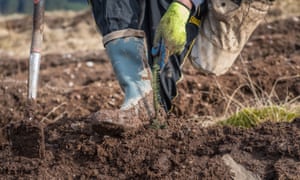Planting a tree is one of the easiest ways you can make a lasting difference to your local environment and, depending on the species, enjoy decades of flowers, fruit and autumn colour – all in return for a modest outlay and a few minutes’ work.
 Although putting a tree in the ground might not sound like rocket science, in recent decades scientific research has overhauled much of the traditional wisdom about planting saplings, including some ideas that sound a little strange. So, let me explain why science proves that it’s better to plant trees in square holes.
Although putting a tree in the ground might not sound like rocket science, in recent decades scientific research has overhauled much of the traditional wisdom about planting saplings, including some ideas that sound a little strange. So, let me explain why science proves that it’s better to plant trees in square holes.Traditionally, trees were planted in round holes, perhaps because their trunks are round, as is the spread of their canopies. It was just one of those seemingly obvious, unquestioned assumptions. But here’s what happens to the tree’s roots when you plant them in a round hole, especially one filled with lots of rich compost and fertiliser, as the old guide books suggest. The little sapling will rapidly start growing new roots that will spread out into the rich, fluffy growing media, giving you excellent early success. However, once they hit the comparatively poorer and compacted soil at the perimeter of the hole, the roots will react by snaking along the edge of the hole’s edge in search of more ideal growing conditions.
Eventually, this spiralling action around the limits of the hole will create a circular root system, with the plants essentially acting much as they do when grown in a container. Once the roots mature they will thicken and harden into a tight ring, creating an underground girdle that will choke the plant, eventually resulting in the severe stunting and even death of your treasured tree.
The very simple and counterintuitive act of digging a square planting hole will dramatically reduce the chances of this happening. This is because systematic planting trials have shown that roots are not that good at growing round corners. When they hit the tight, 90-degree angle of your square hole, instead of sneaking around to create a spiral, they flare out of the planting hole to colonise the native soil.
by James Wong, The Guardian | Read more:
Image: Liam Anderstrem/PA